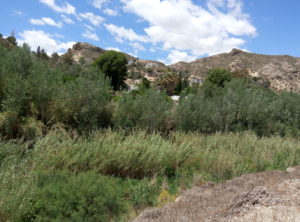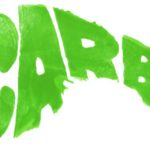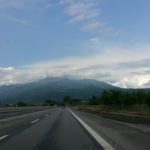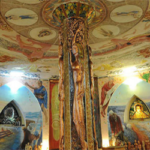Very quickly Brian & I realized Sunseed would not be somewhere we’d settle because no one is allowed to stay for more than 3 years! It is a very transient community. They say it’s so no hierarchy develops so people are equal. I admire this idea but equally I believe hierarchy does exist there simply with the different types of volunteers, co-ordinators, who are there for at least a year, long term volunteers (6 months) & then short term volunteers. Also i wonder can there be hierarchy and equality at the same time? I think this might be possible. I think it’s useful to recognise the wisdom that CAN (but not necessarily) develop over time, or if someone has a skill there is a dynamic that naturally arises. It is how this person uses their power that matters. Its all about facilitating others to empower them. If this can happen this becomes a culture of empowerment & everyone feels valued & powerful.
So despite the fact we couldn’t settle there I felt that since we were drawn there, there was probably something we would learn. And we certainly did. We volunteered 4-5 hrs per day, but it wasn’t really the work itself that we learned from. Rather, for me it was the attitude & space within community for experimentation, & working for yourself in a way that is sustainable for you. That’s not to say nothing much happened, because when the Asequia (stream) that supplied most of our water was blocked, many ppl (including me) corralled together to focus on fixing the problem & of course everyone felt the necessity to do so as water is precious there! It was great getting into a cave & dredging out the mud & debris from the stream.
Saying this though it was evident that things could run more smoothly & be much more efficient in communication & operation (which many there agreed with), so that’s why Fran, Brian & I created the seminar on connection & community building/problem solving processes (detailed in my previous post). This was my opportunity to experiment in my own way, which took up most of my time, but apart from that I got to work with some others departments:
I helped make some chutney jam with plants from the garden, such as fennel, with the master of chilled outness, Jack. It was a great opportunity to get to know the kitchen, especially the awesome hay box which is simply an insulated box/cupboard which allows food to keep cooking without applied energy. So simple & effective!
We feel compelled to make a note about the food at Sunseed because at Findhorn they always said the food has to be great because a good meal can completely change or affect a person’s day. If you are well fed nutritionally AND taste wise then most people are happy despite any challenges they face. During our stay we had 2 cooks who were brought in because of the permaculture course.
The food is sourced mostly locally and in season, which for the duration of our stay meant not a very varied diet. Most of the time it was nice though there were a couple of questionable meals, and by the end we were done with buckwheat. There were a few days of few vegetables meaning quite boring meals. To their credit, as a mostly vegan kitchen in their climate, they did very well.
I also worked with Yosu & Blanca & other short termers in the garden a couple of times, doing simple weeding & bed laying. I always love getting in touch with the earth & at sunseed it was a very sociable experience.
Probably my favourite activity of working with other’s projects, was making shampoo from herbs & plants from the land around sunseed. We did use a couple of bought products but they are detailed below and were ethically & sustainable sourced. As we were walking & picking the ingredients I felt like a kid, with horsetail in one hand, water bottle in the other (it was very warm) and listening to Luke’s vast & enthusiastic knowledge of plants & their medicinal & other qualities. He had never taken a course but has great interest & love for it & just keeps researching, experimenting & asking knowledgable people. He was really inspiring & this is something I feel very connected to & want to learn more about. I really loved the idea that my cleaning products would wash back off me to the land from which it came & without any pollution! It made me feel content about taking the plants, that they were happy to be used in a non violent sustainable way for the environment. Joy!!!
So I leave you with the awesome shampoo recipe.
Shampoo 1litre recipe
Ingredients :
Aloe Vera: 30-40% (app 300ml) – cleansing, antifungal & antibacterial, consistency good, mainly used for ph. For shampoo 4,5or6 is good.
Plant water: 30-50%
Cocoglucoside: 20-25% (surfactant)
Vit E + C: 1% of each (preserving agents – essential oils could work well – tea tree & lemon)
Instructions:
1 Collect plants:
Rosemary (softens & darkens hair)
Bay leaves optional (darkens & nourishes)
Nettle & horsetail (high silica content)
Sage (female, moons, rain, cleansing)
Wild mallow (thickens brew – no medicinal properties)
Nb calendula works well too.
2 brew – bring to boil then turn off overnight or minimum 3 hours.
3 Aloe vera: Peel, wash (rinse pulp with a little water & remove yellow bits which will stain), sieve & blend
4 pour Cocoglucoside into Aloe Vera & mix well
5 sieve plant water so no plants in it & add to Aloe Vera mix. Blend well.
6 finally add in Vit C & E
7 test ph, balance with Vit C until 4-6 reached
Www.pfaf.org
Www.thankyourbody.com/pH-balanced-shampoo-recipe



